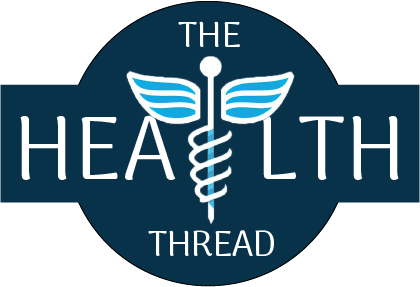Access to quality healthcare is a basic human right, and advocacy groups and initiatives play a crucial role in promoting patient rights and empowering individuals to navigate the healthcare system effectively. These groups and initiatives work to promote healthcare policies, raise awareness about health issues, and provide resources and support to individuals in need. However, there have also been cases where advocacy groups promote particular business interests, and their activities can misguide patients. This essay explores the positive impact of advocacy groups and initiatives on patient rights and healthcare, as well as the negative impact of such groups, with a particular focus on examples from Nepal.
Positive Impact of Advocacy Groups and Initiatives:
Patient Education: Advocacy groups and initiatives provide patients with educational resources and support to help them navigate the complex healthcare system effectively. This education includes information about patient rights, available healthcare options, and how to make informed healthcare decisions.
Policy Advocacy: Advocacy groups and initiatives work to promote healthcare policies that support patient rights, such as affordable and accessible healthcare, insurance coverage, and protections against medical malpractice.
Community Support: Advocacy groups and initiatives provide community support and resources to patients in need, such as access to affordable medications, counseling, and support groups.
Research and Innovation: Advocacy groups and initiatives support research and innovation in healthcare, leading to new treatments, better outcomes, and improved quality of life for patients.
Negative Impact of Advocacy Groups and Initiatives:
Business Interests: Some advocacy groups may promote particular business interests, leading to conflicts of interest that prioritize profit over patient care. Such groups may promote treatments or products that are not based on evidence-based medicine or may mislead patients about the effectiveness of certain treatments.
Misinformation: Some advocacy groups may spread misinformation about healthcare issues, leading to confusion and mistrust among patients. For example, some groups may oppose vaccination or promote alternative medicine without scientific evidence.
Conflicting Priorities: Advocacy groups and initiatives may have conflicting priorities, leading to disagreements and confusion among patients. For example, some groups may focus on advocating for patient rights, while others may prioritize healthcare industry interests.
Examples from Nepal:
In Nepal, various advocacy groups and initiatives are working towards improving healthcare access and promoting patient rights. The Nepal Health Research Council (NHRC) promotes research and innovation in healthcare, while the Nepali Patient Rights Forum advocates for patient rights, including access to affordable healthcare and insurance coverage. However, there have also been cases where advocacy groups in Nepal have promoted conflicting priorities and business interests, leading to mistrust and confusion among patients. For example, the Nepal Pharmaceutical Association (NPA) has been criticized for promoting the interests of pharmaceutical companies over patient care and safety.
Conclusion: Advocacy groups and initiatives play a crucial role in promoting patient rights and empowering individuals to navigate the healthcare system effectively. However, there are also risks associated with such groups, including the promotion of particular business interests and misinformation. In Nepal, various advocacy groups are working towards improving healthcare access and promoting patient rights, but there have also been cases of conflicting priorities and business interests. To ensure that advocacy groups and initiatives effectively promote patient rights and healthcare, it is essential to prioritize evidence-based medicine, transparency, and patient-centered care.
REFERENCES
- World Health Organization. (2018). The right to health. https://www.who.int/news-room/fact-sheets/detail/the-right-to-health
- World Health Organization. (2019). Health literacy toolkit for low- and middle-income countries. https://www.who.int/publications/i/item/health-literacy-toolkit-for-low-and-middle-income-countries
- Nepal Health Research Council. (2021). About us. http://nhrc.gov.np/index.php/about-us
- Nepali Patient Rights Forum. (2021). About us. http://nprf.org.np/index.php/about-nprf/
- Nepal Pharmaceutical Association. (2021). Welcome to Nepal Pharmaceutical Association. http://npa.org.np/
- The Kathmandu Post. (2021, July 23). Pharmaceutical industry accused of promoting business over health. https://kathmandupost.com/health/2021/07/23/pharmaceutical-industry-accused-of-promoting-business-over-health
- Khanal, S., Veerman, L., Nissen, L. M., & Hollingworth, S. A. (2018). Adherence to antihypertensive medicines in the public sector in Nepal. International Journal of Clinical Pharmacy, 40(3), 598-603.
- Marahatta, S. B., Yadav, S., Paudel, R., Aryal, K. K., & Sigdel, S. (2018). Patient safety in Nepal: What can be done? Journal of Nepal Health Research Council, 15(36), 1-4.
- Ghimire, R., Dhungana, G. P., Ghimire, R., & Sapkota, B. (2020). Awareness of patient’s rights among inpatients of a selected hospital of Kathmandu, Nepal. Journal of Multidisciplinary Healthcare, 13, 1265-1271.
- Nidhi, R., & Chhetri, R. (2019). Communication barriers in doctor-patient relationship at a hospital in Nepal. Journal of Medical Science and Clinical Research, 7(4), 36-39.
- Gyawali, S., & Rathore, D. S. (2020). Factors influencing doctor-patient relationship: A descriptive cross-sectional study in Eastern Nepal. Journal of Clinical and Diagnostic Research, 14(3), JC05-JC09.
- Nepal, S., Gurung, S. B., Budhathoki, S. S., & Neupane, R. (2021). Assessment of patient satisfaction and factors influencing it in a tertiary hospital of Eastern Nepal. Journal of Patient Experience, 8, 1-7.
